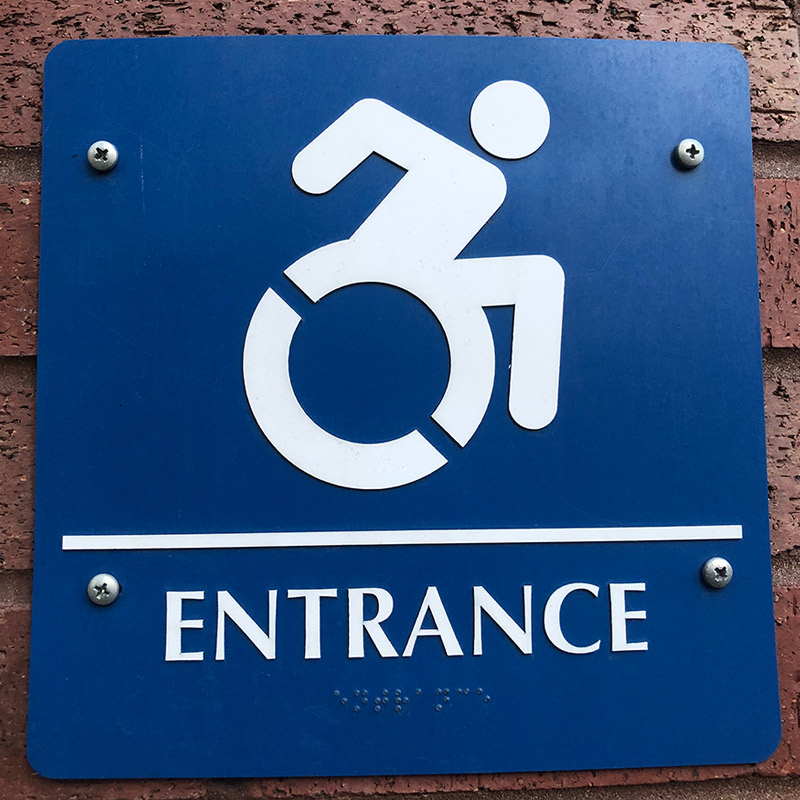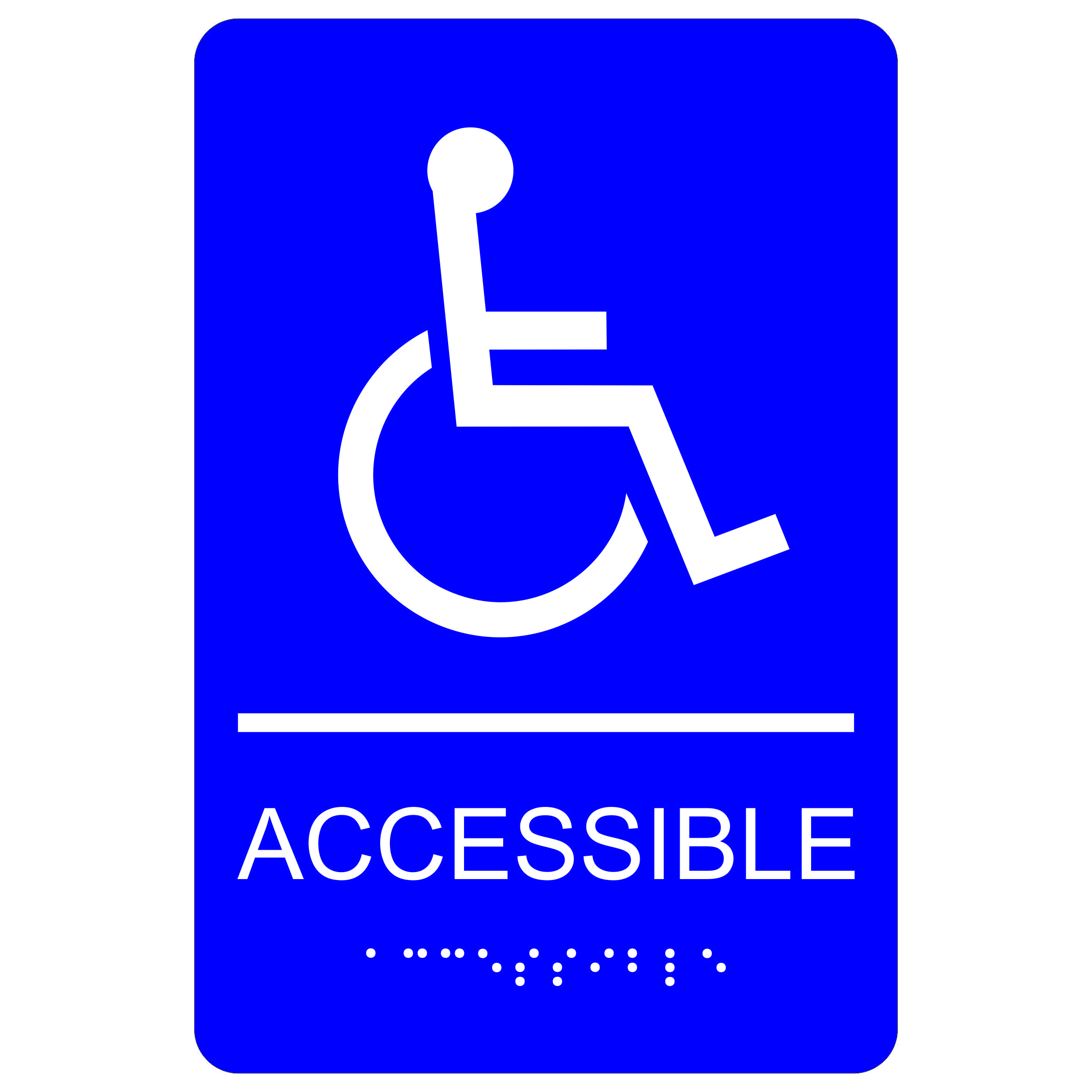Check out the Importance of ADA Signs in Public Spaces
Check out the Importance of ADA Signs in Public Spaces
Blog Article
Checking Out the Trick Attributes of ADA Signs for Enhanced Availability
In the realm of accessibility, ADA signs offer as quiet yet effective allies, guaranteeing that spaces are inclusive and navigable for individuals with specials needs. By incorporating Braille and responsive aspects, these indications break obstacles for the aesthetically damaged, while high-contrast color schemes and legible font styles cater to diverse aesthetic demands.
Significance of ADA Conformity
Making certain conformity with the Americans with Disabilities Act (ADA) is crucial for fostering inclusivity and equivalent gain access to in public areas and work environments. The ADA, enacted in 1990, mandates that all public facilities, companies, and transportation solutions suit people with handicaps, ensuring they delight in the same legal rights and chances as others. Compliance with ADA standards not only meets legal responsibilities yet likewise enhances a company's track record by demonstrating its dedication to variety and inclusivity.
Among the key elements of ADA conformity is the application of obtainable signs. ADA signs are designed to ensure that individuals with impairments can conveniently navigate via spaces and structures. These indications need to stick to details standards relating to dimension, font style, shade contrast, and placement to assure exposure and readability for all. Correctly implemented ADA signs helps remove barriers that people with specials needs typically come across, thereby promoting their freedom and self-confidence (ADA Signs).
In addition, sticking to ADA guidelines can alleviate the danger of potential penalties and lawful effects. Organizations that fall short to follow ADA standards may deal with fines or claims, which can be both destructive and monetarily challenging to their public picture. Thus, ADA compliance is integral to promoting an equitable environment for every person.
Braille and Tactile Aspects
The consolidation of Braille and tactile components right into ADA signage symbolizes the concepts of accessibility and inclusivity. It is normally positioned under the corresponding text on signage to guarantee that individuals can access the information without visual support.
Tactile components extend past Braille and consist of increased personalities and symbols. These components are designed to be noticeable by touch, allowing people to determine area numbers, washrooms, exits, and various other crucial areas. The ADA sets certain guidelines regarding the dimension, spacing, and positioning of these tactile components to enhance readability and ensure consistency across various atmospheres.

High-Contrast Color Pattern
High-contrast color design play a critical role in improving the exposure and readability of ADA signs for individuals with aesthetic problems. These systems are necessary as they maximize the difference in light reflectance in between message and background, guaranteeing that indicators are conveniently discernible, even from a range. The Americans with Disabilities Act (ADA) mandates the usage of specific color contrasts to suit those with minimal vision, making it a crucial element of compliance.
The efficacy of high-contrast colors hinges on their capability to stand out in various lighting conditions, including dimly lit atmospheres and areas with glow. Normally, dark text on a light background or light message on a dark history is used to achieve optimum contrast. For example, black text on a white or yellow history offers a raw visual difference that helps in quick recognition and comprehension.

Legible Fonts and Text Size
When taking into consideration the design of ADA signage, the option of legible font styles and suitable text size can not be overstated. These elements are vital for guaranteeing that indicators are accessible to people with visual disabilities. The Americans with Disabilities Act (ADA) mandates that font styles need to be not italic and sans-serif, oblique, script, highly decorative, or of uncommon type. These requirements aid ensure that the message is quickly readable from a range and that the personalities are distinct to diverse audiences.
According to ADA guidelines, the minimum message height ought to be 5/8 inch, and it ought to increase proportionally with checking out distance. Consistency in text size adds to a cohesive aesthetic experience, assisting people in browsing atmospheres successfully.
Moreover, spacing in between letters and lines is essential to legibility. Sufficient spacing protects against personalities from appearing crowded, improving readability. By adhering to these criteria, designers can considerably boost access, making certain that signs serves its desired objective for all people, despite their visual capacities.
Reliable Placement Methods
Strategic positioning of ADA signage is essential for optimizing ease of access and ensuring conformity with lawful requirements. Appropriately positioned indications guide individuals with impairments effectively, helping with navigation in public rooms. Trick considerations include Discover More Here closeness, exposure, and height. ADA guidelines stipulate that indicators ought to be mounted at an elevation in between 48 to 60 inches from the ground to guarantee they are within the line of sight for both standing and seated people. This typical elevation variety is essential for inclusivity, making it possible for mobility device users and people of varying elevations to access details easily.
In addition, signs have to be positioned adjacent to the latch side of doors to enable easy identification before entry. Uniformity in sign positioning throughout a facility improves predictability, decreasing confusion and improving general customer experience.

Conclusion
ADA indications play a vital role in advertising access by integrating attributes that attend to the requirements of individuals with impairments. These components collectively cultivate an inclusive atmosphere, emphasizing the relevance of ADA compliance in making sure equivalent gain access to for all.
In the world of access, ADA indicators offer as silent yet effective allies, ensuring that rooms are accessible and inclusive for people with specials needs. The ADA, established in 1990, mandates that all public centers, employers, and transport services fit individuals with handicaps, guaranteeing they take pleasure in the exact same legal rights and possibilities as others. ADA Signs. ADA signs are designed to make sure that individuals with impairments can quickly browse via rooms and buildings. ADA guidelines state that indications must be placed at a height between 48 to 60 inches from the ground to guarantee they are within the line of view for both standing and seated individuals.ADA indications play a vital role in promoting accessibility by integrating attributes that attend to the requirements of people with disabilities
Report this page